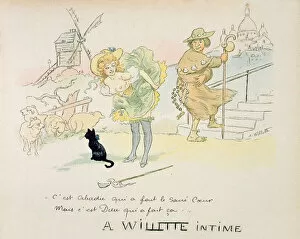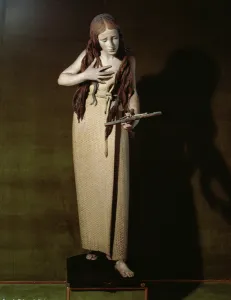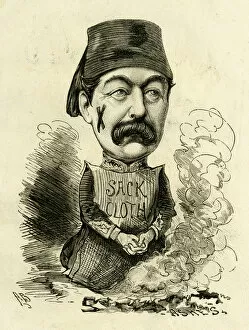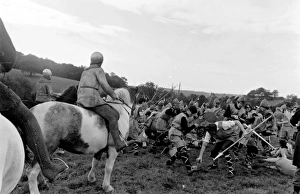Sackcloth Collection
"Sackcloth: A Symbol of Mourning and Penitence" Throughout history, it has been a powerful symbol of mourning and penitence
All Professionally Made to Order for Quick Shipping
"Sackcloth: A Symbol of Mourning and Penitence" Throughout history, it has been a powerful symbol of mourning and penitence. In artworks such as "Saint Mary Magdalene in Penitence" by the Circle of Giuseppe Scolari or "The Penitent Magdalene" from 1664, we witness the depiction of individuals draped in sackcloth, their faces filled with sorrow and remorse. In the engraving "Pair of peasants" from 1497 or "Pair of villagers at the market" from 1519, we catch a glimpse into the lives of ordinary people who also wore sackcloth to express their grief during difficult times. It was a humble fabric that transcended social classes when it came to expressing deep emotions. Even in more contemporary depictions like Job Nixon's painting "Eating-House, Chelsea, " set between 1911-1924, we see how sackcloth continues to be associated with somber moments. The image portrays an atmosphere where patrons are immersed in their own thoughts while dressed in simple garments made out of this coarse material. Sackcloth's significance extends beyond art; it is deeply rooted in religious practices as well. St Bernard of Clairvaux covering a man with robes exemplifies compassion and empathy towards those seeking redemption. Additionally, the Sacre-Coeur basilica stands tall as a testament to God's grace amidst human suffering - reminding us that although Abadie physically constructed it, its true meaning lies within divine intervention. From battle re-enactments like the one depicting cross-gartered jeans and dyed sackcloth doublets during the Battle of Hastings to cartoons featuring Valentine Baker, British soldier donning this fabric - each instance reinforces sackcloth's association with repentance and reflection on past actions.














